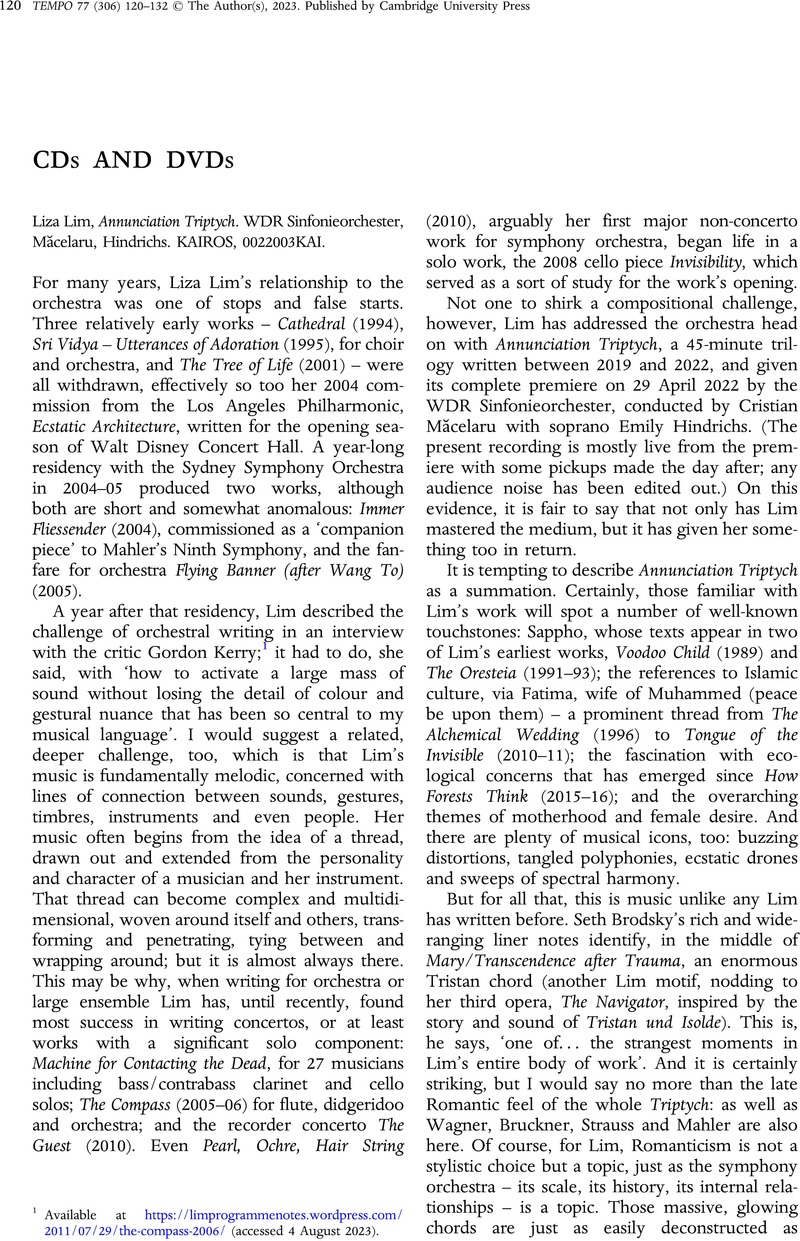No CrossRef data available.
Article contents
Liza Lim - Liza Lim, Annunciation Triptych. WDR Sinfonieorchester, Măcelaru, Hindrichs. KAIROS, 0022003KAI.
Review products
Liza Lim, Annunciation Triptych. WDR Sinfonieorchester, Măcelaru, Hindrichs. KAIROS, 0022003KAI.
Published online by Cambridge University Press: 01 September 2023
Abstract
An abstract is not available for this content so a preview has been provided. Please use the Get access link above for information on how to access this content.

- Type
- CDs AND DVDs
- Information
- Copyright
- Copyright © The Author(s), 2023. Published by Cambridge University Press
References
1 Available at https://limprogrammenotes.wordpress.com/2011/07/29/the-compass-2006/ (accessed 4 August 2023).



